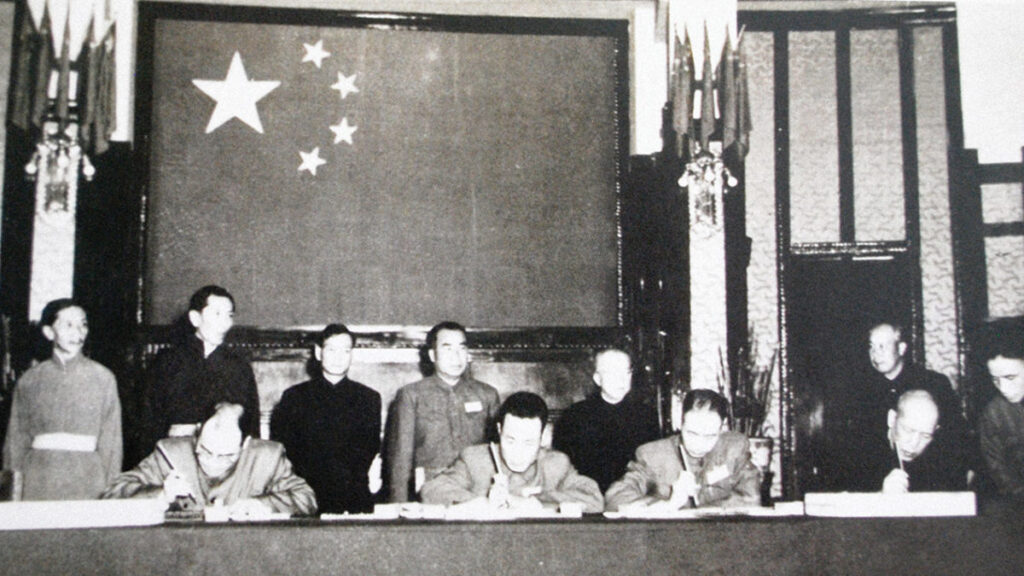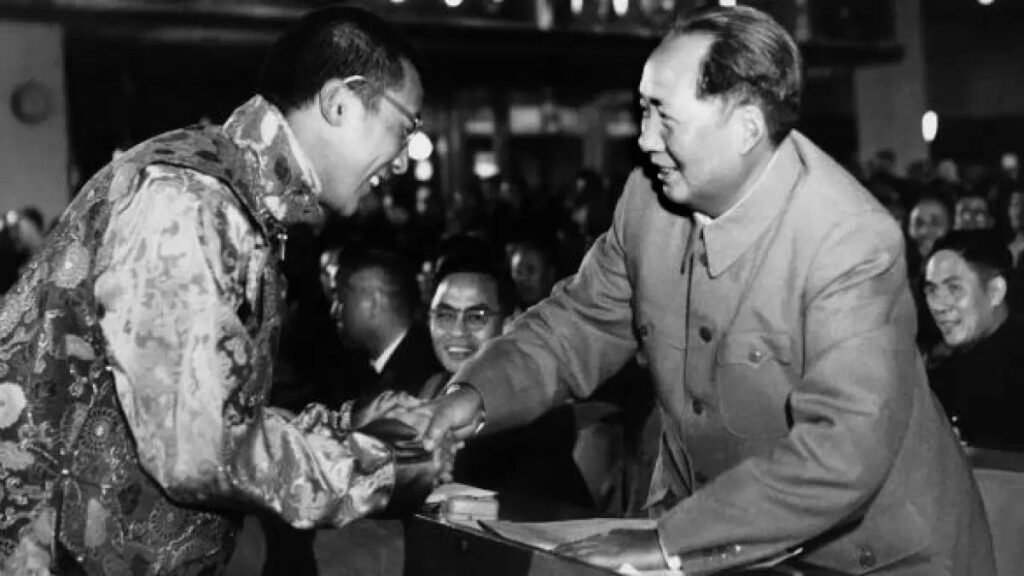The Seventeen-Point Agreement: Changing Fate of Tibet

This May 23rd marks the 72nd anniversary of the signing of the important Seventeen-Point Agreement between the People’s Republic of China (PRC) and the local government of Tibet for the peaceful liberation of Tibet. The agreement enumerated that Tibet would retain relative autonomy, including the rights to practice its religion, culture, and safeguard its identity. However, in reality, since the annexation of Tibet, Chinese policies in Tibet have had a self-serving agenda with the main aim of assimilating the land and its people into mainstream China, with no regard or respect for Tibet’s autonomy.

Historically, Tibet has been a sovereign nation, while Mongolian, Nepalese, Chinese, and the British exercised temporary control over Tibet in different periods. Nevertheless, the question remains: why did the PRC, which claims that Tibet has always been a part of China, need to enter into an agreement in 1951? Pertinently, the three traditional provinces that constituted Tibet, namely Central Tibet, Kham in the southern region, and Amdo in its northeastern part, were attacked by the PLA to annex Tibet. However, fearing a major outbreak of Tibetan resistance, the PRC cunningly forced Ngabo Ngawang Jigme, the then Tibetan Governor-General of Chamdo and a PLA prisoner, to sign the 1951 Seventeen-Point Agreement, drafted by the PRC.
A little insight into the Seventeen-Point Agreement illustrates a false notion of “one country, two systems.” In reality, this cannot be further from the truth. The agreement declared Tibet as part of China (Point 1), whereby the latter would be responsible for Tibet’s external affairs (Point 14). The Tibetan government was to assist the PLA in entering Tibet and consolidating its national defense (Point 2), to mention a few. At the same time, the agreement also recognized Tibet’s right to exercise autonomy in the ethnic region (Point 3). The existing political system, status, functions, and powers of the Dalai Lama and the Panchen Lama were not to be altered by the PRC (Point 4). It emphasized respecting and protecting the religious beliefs, customs, and habits of the Tibetan people (Point 7). Internal reforms were supposed to take place not through Chinese compulsion, as is being practiced, but through consultations with Tibetan leaders (Point 11).

As envisaged, the Seventeen-Point Agreement had zero shelf life. Measures such as land reforms in 1959 to suit the PRC led to major discontent among the local population. The resistance was viewed very seriously by the autocratic PRC regime, which planned a military invasion to silence the critics. The Dalai Lama, the Tibetan leader, fled Tibet in 1959 and sought asylum in India, from where he repudiated the Seventeen-Point Agreement, claiming it was enforced on the Tibetan government by force. Although the Tibetan representatives of the agreement were allowed consultation with their respective government in Lhasa, it is now established (and also maintained by the Dalai Lama after 1959) that the agreement was signed under duress, without the knowledge of the Tibetan government and the Dalai Lama. Moreover, the seals of the Tibetan government used in the agreement are claimed to have been counterfeited by the PRC.
Also Read, TIBET: A Lost Cause?
While 1951 witnessed the death of Tibet’s independence, the 1959 uprising and the subsequent Chinese military invasion of Tibet witnessed the death of the Seventeen-Point Agreement and Tibet’s relative autonomy within China. Since 1959, Chinese annexation of Tibet has received international condemnation and marks the beginning of the prolonged unresolved Sino-Tibetan relation. Three proposals put forth by the Dalai Lama, namely the Five Point Peace Plan (1987), the Strasbourg proposal (1988), and the Memorandum of Genuine Autonomy (2008), form the core of the Tibetan approach to resolve their issue: restoring peace, harmony, and autonomy (territorial, religious, and cultural) of Tibet while being part of the PRC remains a distant dream. In all terms, Tibet has been transformed into China’s “one country, one system,” which has found mention in the latest report by the United Nations Special Rapporteurs (February 2023), stating that China aims at the total cultural absorption of the Tibetans into its majoritarian Han culture. Many international reports have highlighted pertinent issues such as the prohibited school and college curricula in the Tibetan language, dilution of history or culture, and forced education in boarding schools away from home aimed at removing Tibetan children’s familiarity with their culture, religion, and language at an early age. The repeated incidents of demolition of Tibetan religious sites, arrests, detention, and torture of Tibetans, and their subjection to “re-education,” as well as the 2021 issuing of the white paper titled “Tibet’s Peaceful Liberation, Prosperity, and Development,” which emphasizes the Sinicization of religion, namely the adaptation of all religious groups and believers to the country’s socialist society, are among the many efforts of the PRC that continue to this day to destroy the very autonomous existence of Tibet, paving the way for the anticipated Sinicization in Tibet.
On the 72nd anniversary of the Seventeen-Point Agreement, it is, therefore, pertinent to revisit history to infer the extent of Tibet’s compromised autonomous existence and how the international community and Tibetan diaspora can be the voice for Tibetans’ continued struggle against Chinese colonialism.





